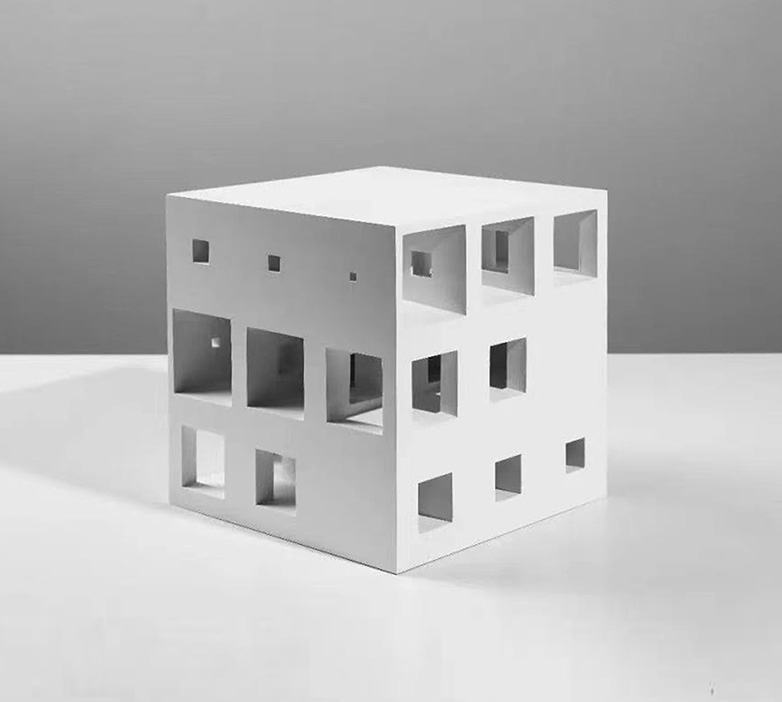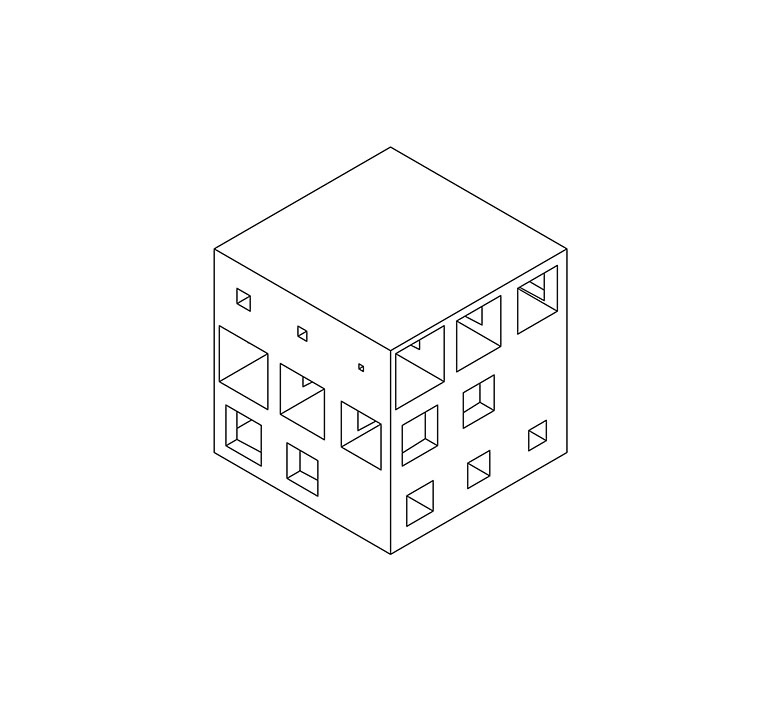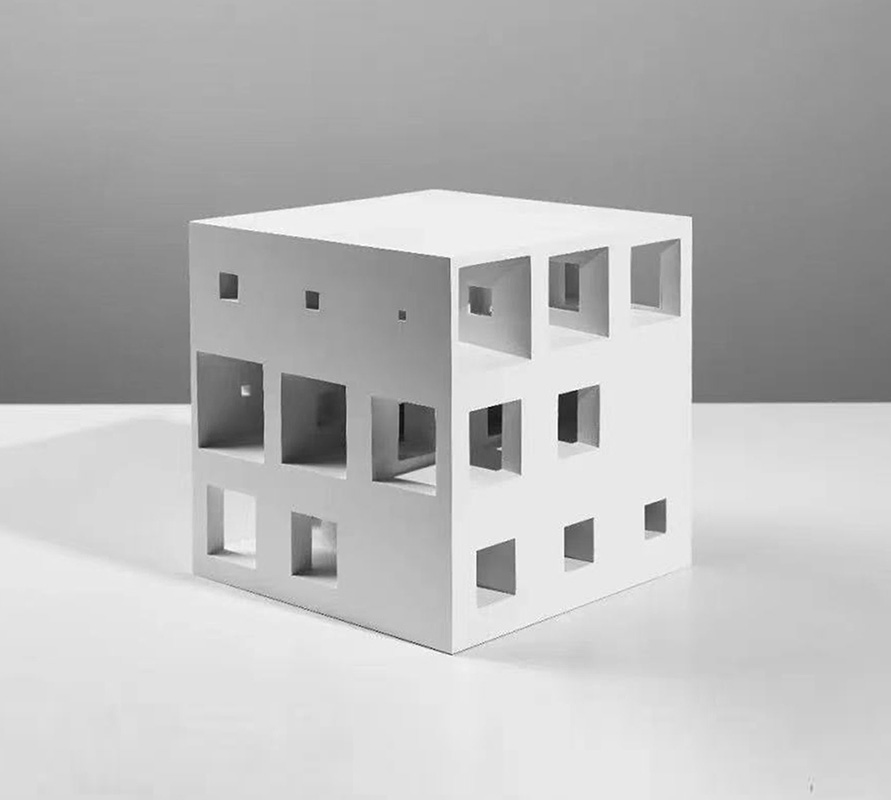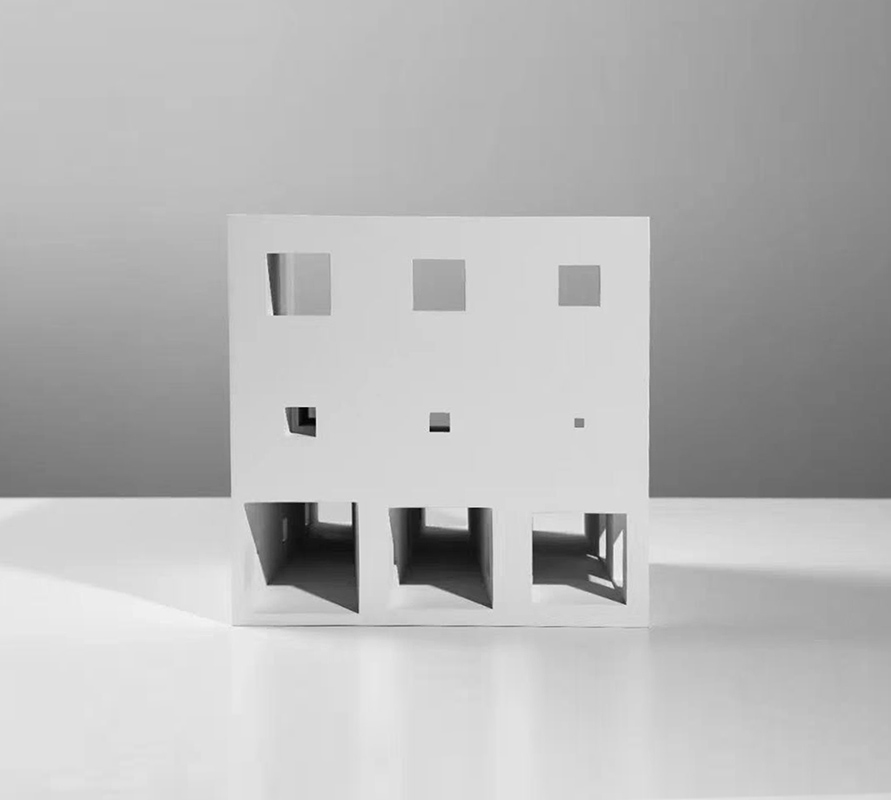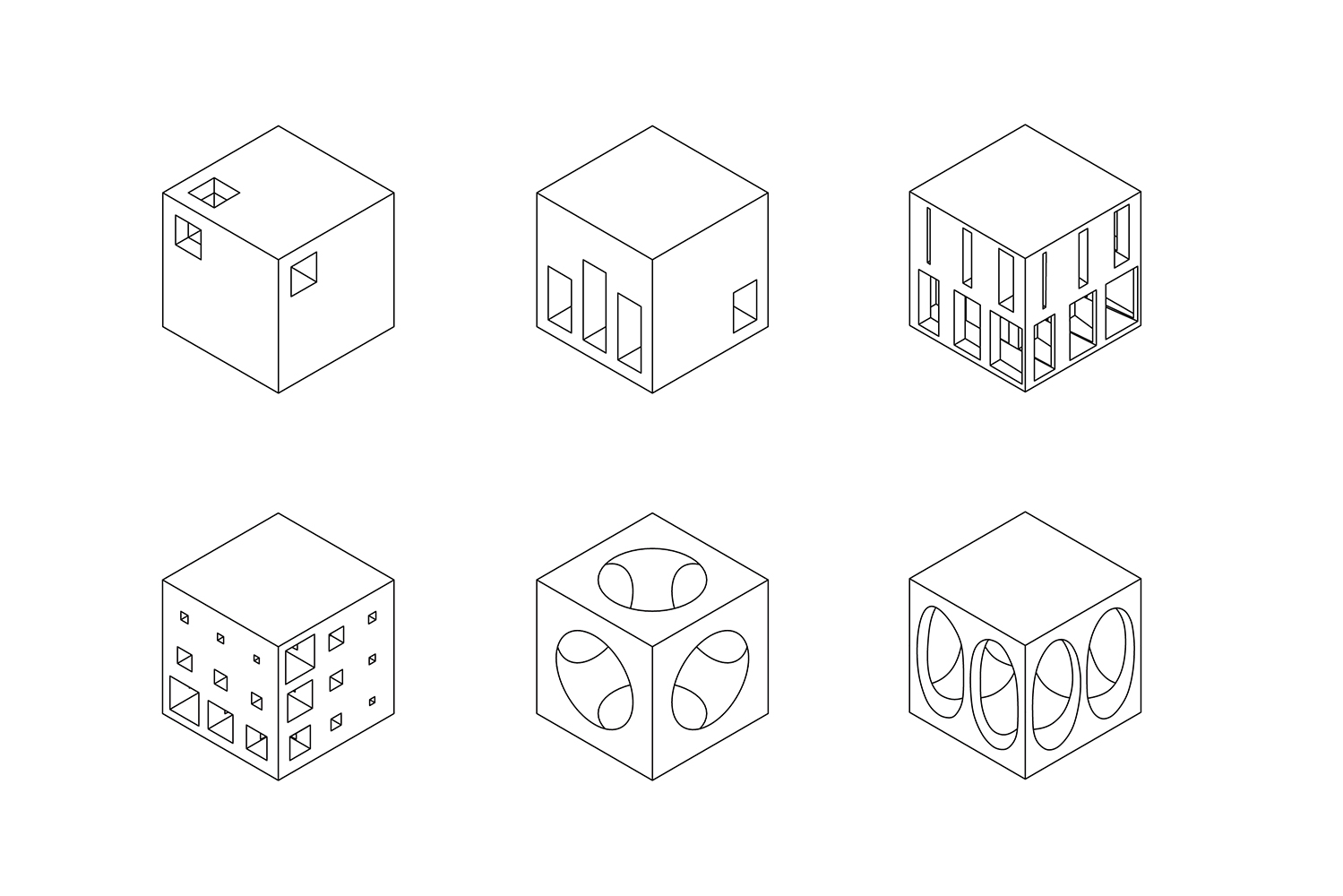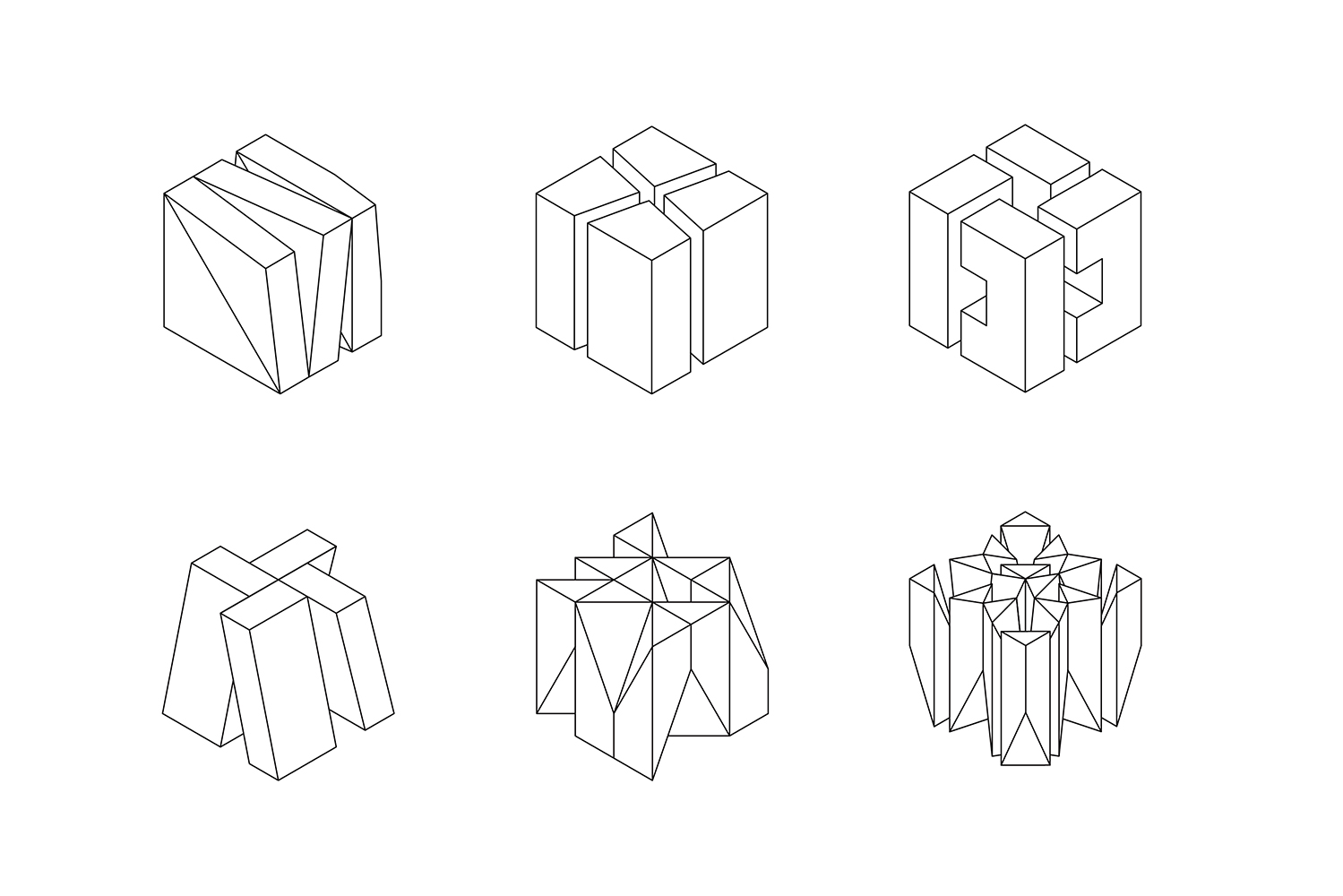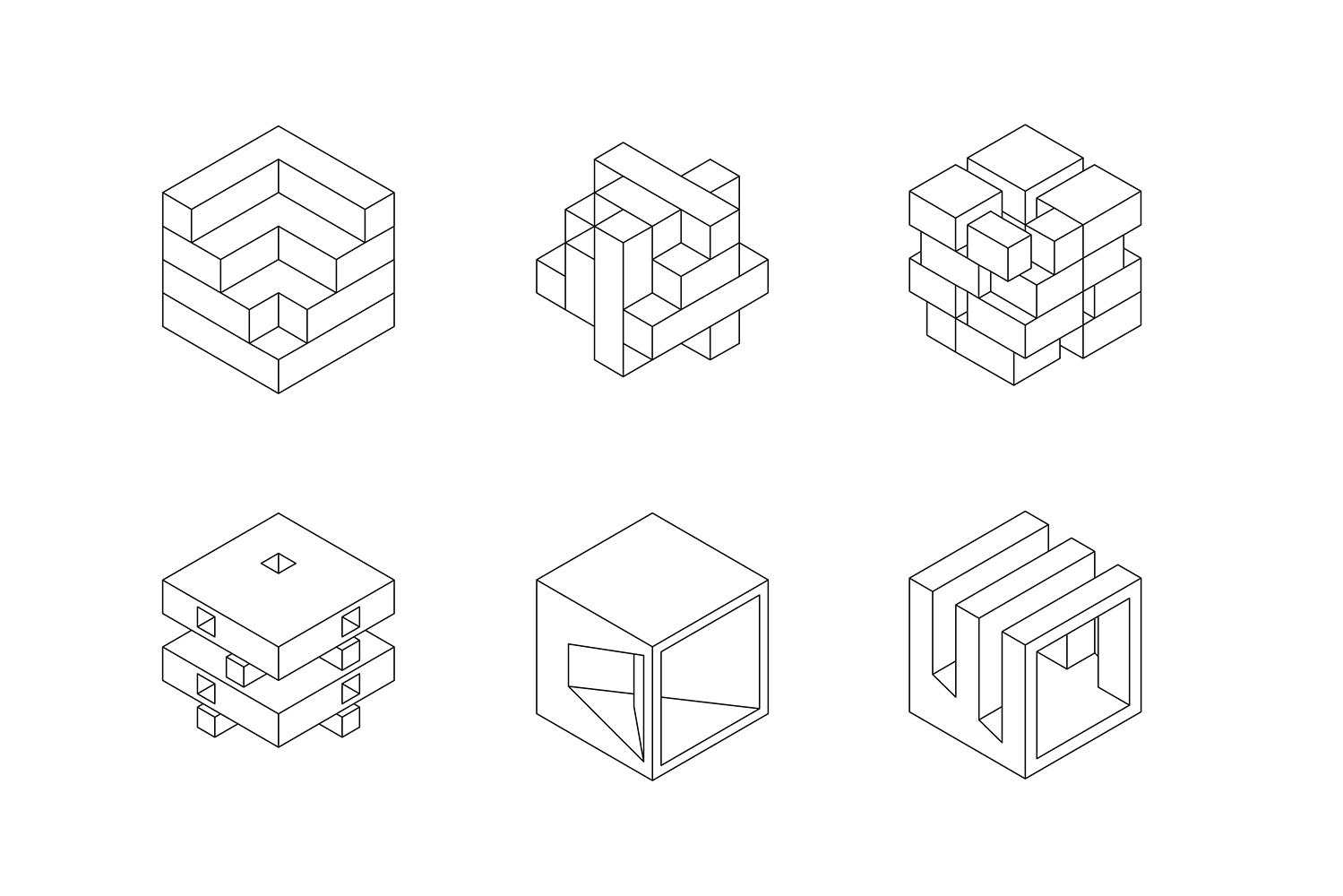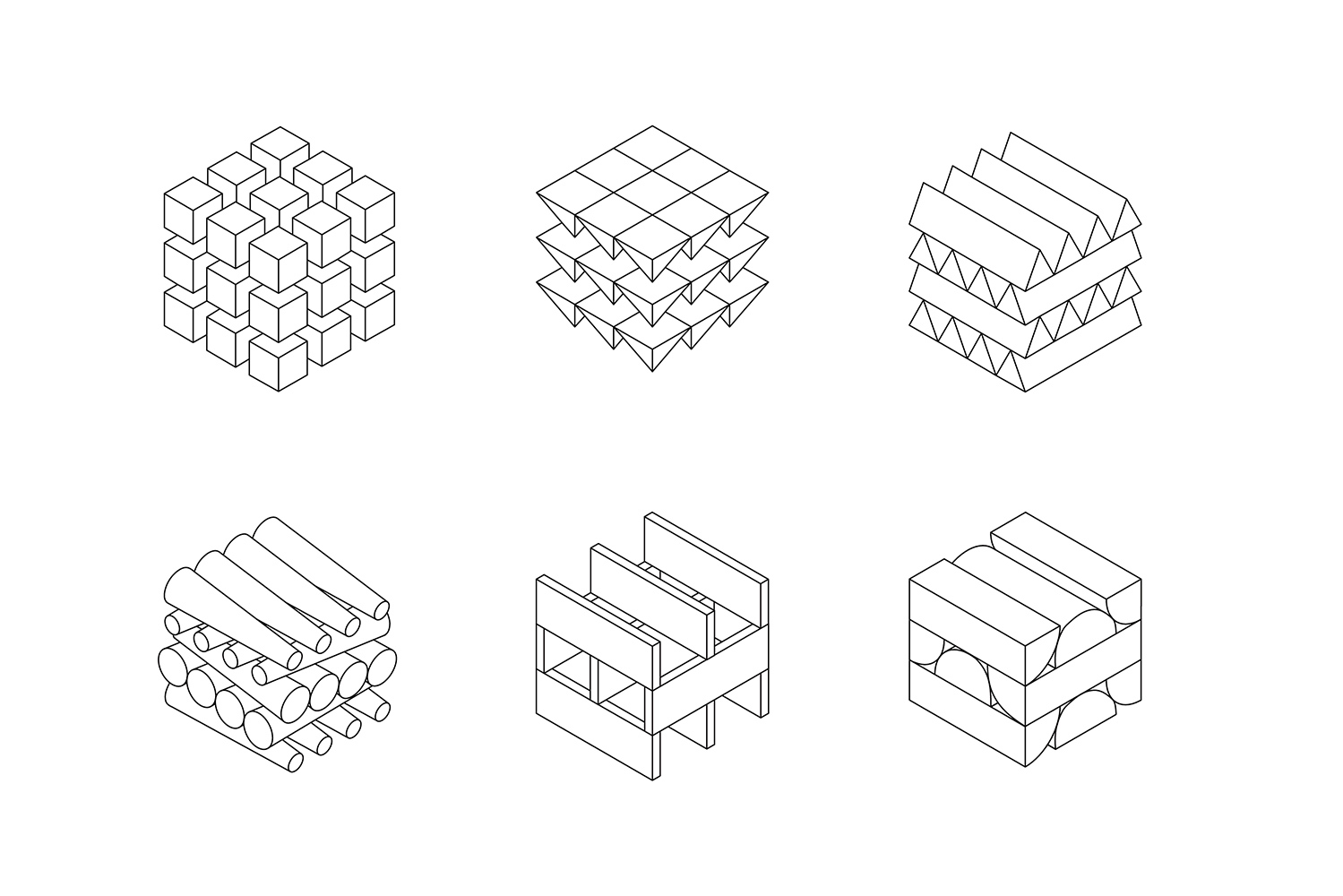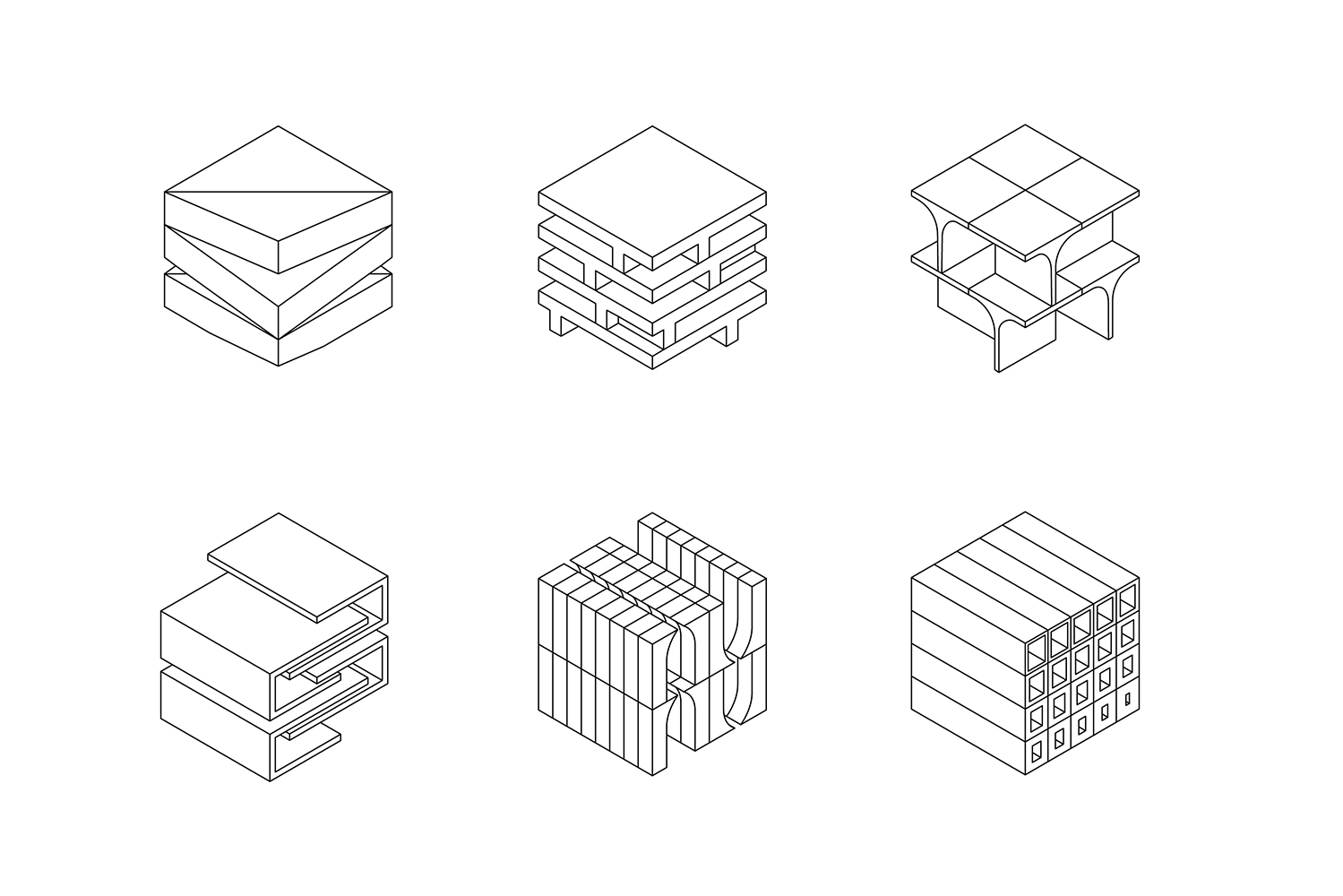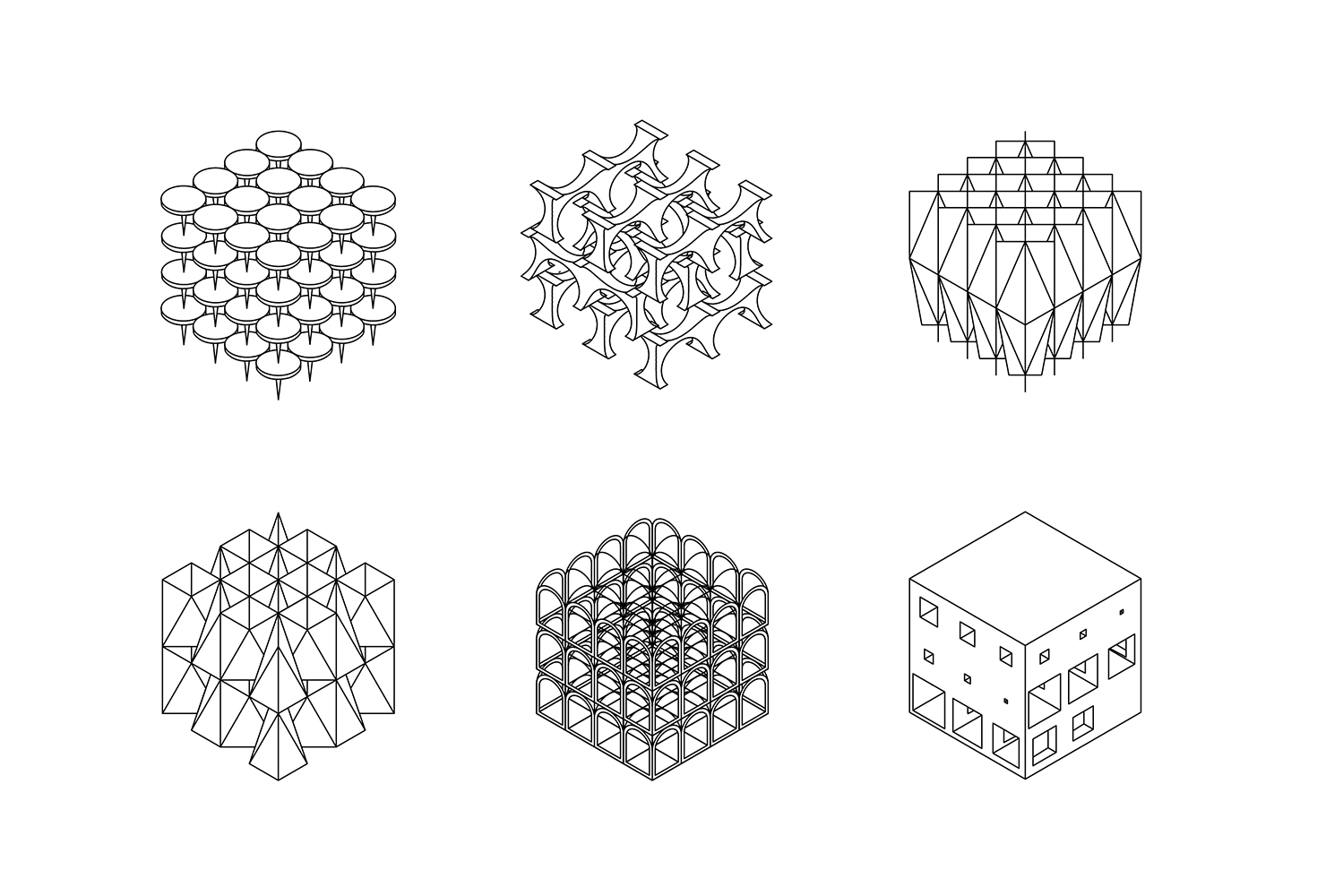
北京城市建筑双年展
我们设计一个立方体,首先它必须始终是对立方体本身的探讨,而不是引入其他臆想的设计条件。方案唯一的限制是展方所给出的展品尺寸限制:20厘米边长的立方体。
于是我们将这个限制视为项目的“基地”,对其进行分析、并展开形式探索。方案从“尺度”(基于20厘米的倍数)和“运动”(形体变化的方向)入手。在经历了许多轮的令人兴奋的试错和讨论后我们得到了一个由简单的九宫格变化发展来的复杂形体。它的表面以理性模式分布着诸多边长为20厘米几何倍数、等差数列进行大小变化的洞口。每一个洞口向形体内部正交拉伸,相互碰撞,产生了复杂的几何变化,并产生了很多看似“走廊”、“窗”、“门”的视觉元素。这个结果非常出乎我们意料:因为整个过程中,形体从未被刻意与狭义的“建筑”联系起来。这个“类建筑”不禁使我们思考作为学科领域语言一部分的那些词汇——“窗”、“门”、“墙”、“柱”等——究竟意味着什么;以及在设计过程中形式能如何反向启发设计者。
方案反思了在“功能”为代表的促使建筑生成的基础文本缺位的情况下、“设计”能够如何推进。我们尝试将难以描述的“设计行为”以可见的方式展示出来。展品最终意义在我们看来并不重要,我们鼓励每一个观众按照他自己的喜好去与之互动,并对其进行解释。
BEIJING URBAN AND ARCHITECTURE BIENNALE
When we design a cube, first of all, it must always be a discussion of the cube itself, rather than introducing other imaginary design conditions. The only limitation of the scheme is the exhibit size limitation given by the exhibitor: cube with 20 cm side length.
Therefore, we regard this limitation as the "base" of the project, analyze it and explore its form. The scheme starts with "scale" (based on multiples of 20cm) and "movement" (direction of shape change). After many rounds of exciting trial and error and discussion, we got a complex form developed from simple Jiugongge changes. On its surface, there are many holes with geometric multiples of 20 cm in side length and arithmetic progression changing in size in rational mode. Each hole extends orthogonally to the inside of the shape and collides with each other, resulting in complex geometric changes and many visual elements that look like corridors, windows and doors. This result is very unexpected: because in the whole process, the form has never been deliberately associated with the narrow sense of "architecture". This "architecture-like" can't help but make us think about what the words-window, door, wall, column, etc.-which are part of the language of the subject field really mean. And how the form can reverse inspire the designer in the design process.
The scheme reflects on how "design" can be promoted in the absence of the basic text of "function". We try to show the indescribable "design behavior" in a visible way. The final significance of the exhibits is not important to us. We encourage every audience to interact with them according to their own preferences and explain them.

